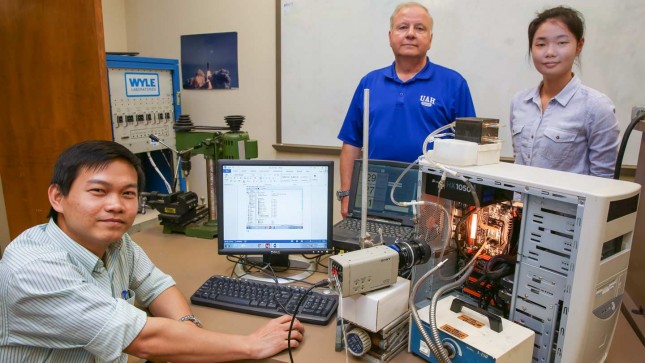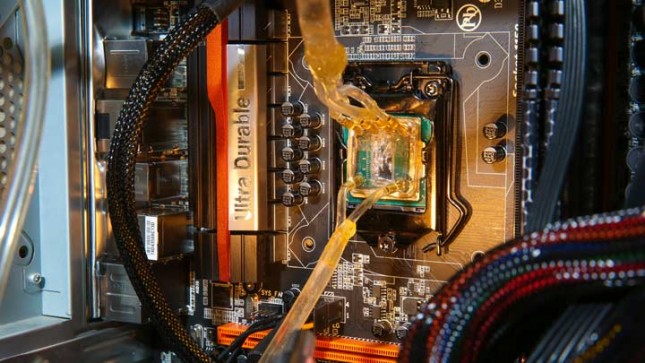New Closed Loop Convection CPU Cooler Hopes To Save Power and Keep Things Cool
A group at The University of Alabama in Huntsville (UAH) believe they could save U.S. consumers more than $6.3 billion per year in energy costs by ditching your computers CPU cooler fans and using their patented passive cooling system. The system uses the convection process to circulate 3M’s Fluorinert FC-72 liquid through a closed loop liquid cooler. His design works by having the liquid make direct contact with the CPU die and then utilizes a decently sized heat sink that serves as an external radiator.
Fluorinert FC-72, the 3M brand name for an electronic cooling liquid and electrical insulator, is a colorless, odorless, biologically inert and chemically stable dielectric liquid that is nonflammable and has a boiling point at 56 degree Celsius (133 degrees Fahrenheit).
The convection cycle works as heat from the computer processor vaporizes 3M’s Fluorinert FC-72 and that moves the lighter fluid along to the heat exchanger where it condenses into a heavier liquid and makes the cooling loop again. The project was done by University of Alabama in Huntsville student Cuong Nguyen for his chemical engineering master’s thesis. Mr. Nhuyen was able to test the system on a system using Intel Core i3 processors with the integrated heat spreaders (IHS) removed and found that the system was able to work for a period of 12 hours without issue with a steady state temperature of 56-degree Celsius. This is the boiling point of Fluorinert FC-72.
“When we remove the cooling fan, it saves material costs, but it also eliminates the noise, vibration and dust contamination of fan cooling,” Nguyen says. “When you remove the dust, you remove the chance that it can build up. Build up of dust can destroy the electronic components.”
The video clip below shows that on an unknown processor he was able to get an inlet temperature of 24C and an outlet temperature of 57C.
We hope that the graduate students the best of luck in bringing this technology to market! The great hurdle to a cooling loop like this is that the IHS needs to be removed from the processor, which is something most people would never do as it would instantly void your warranty. Would the chip makers be able to make a special ‘lid’ just for a convection cooler? The real play here might be for the IP and to get it acquired by someone like Intel or AMD that could use it down the road.


